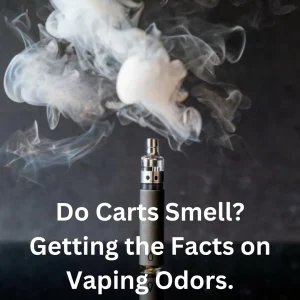Do Carts Smell? Advanced Insights into Vaping Odor and How to Keep It Discreet
Vaping continues to rise as a popular alternative to smoking, prized for its smoother inhalation, diverse product types, and markedly reduced smell. But for newcomers and seasoned users alike, a common concern remains: Do vape carts smell like weed? Understanding the science behind cannabis odors—and knowing how to control them—can significantly enhance your experience with discreet consumption. Shop friendly farms carts Alaska
1. What Creates Cannabis Smell? The Role of Terpenes
The distinctive odor of cannabis is primarily caused by terpenes—volatile organic compounds (VOCs) responsible for the plant’s aroma and flavor. Each cannabis strain boasts a unique terpene profile (think limonene, myrcene, pinene, and caryophyllene), which not only gives it its sensory signature but also influences its effects.
When cannabis flower burns—at temperatures exceeding 400°F—combustion destroys or alters these terpenes, releasing a strong, skunky smoke that lingers on clothes, furniture, and in the air. In contrast, vaporization avoids combustion altogether.
2. Vaping vs Smoking: Why Vapor Is Far Less Pungent
Unlike smoking, vaping heats cannabis below combustion levels—typically between 300–400°F—which gently evaporates cannabinoids and terpenes without burning plant matter. This difference produces cleaner, cooler vapor, markedly reducing the familiar marijuana stench.
-
Dry herb vaporizers retain original terpenes, offering aromatic but not overpowering smells.
-
Oil carts and distillates further lower odor by distilling or removing most terpenes during processing.
-
Live resin cartridges, which preserve full-spectrum terpenes, exhibit greater vapor complexity but still emit far less smell than smoke.
3. Why Oil Carts and Dab Pens Can Be Nearly Odorless
Oil carts and dab pens are engineered to deliver concentrated cannabinoids, often post-extraction refinement, especially with distillates that lack most terpenes. As a result, these vape products emit very little odor while in active use.
-
Minimal VOCs: With few aromatic molecules left, the vapor produced is mostly odorless.
-
Metallic or plastic notes may occur, stemming from hardware, not cannabis scent.
-
Low-temp usage minimizes heat, further keeping aroma subtle and contained.
Still, some terpene headspace may persist, especially in live resin carts, which will carry more scent than filtered concentrates.
4. Dry Herb Vaporizers: Cleaner Smell, But Still Noticeable
When vaping ground cannabis, more natural terpenes remain intact. However, because these vaporizers avoid combustion, the aroma is generally lighter and cleaner:
-
Convection models that heat flowers with hot air produce lighter vapor and less lingering odor compared to conduction heaters, which make direct contact.
-
Even with convection, expect a hint of strain-specific smell—citrusy Sativas or diesel-heavy hybrids like Sour Diesel will still fill a room, albeit more gently.
-
Improper storage of used herbs or insufficient cleaning can amplify lingering scents within devices and containers.
5. Dab Pens: Discreet, But Not Odor-Free
Dab pens are designed for concentrates like dab wax or live resin. When used properly, they emit minimal cannabis odor, but residues left after use can foster lingering scents:
-
Residual oil in atomizers or oven chambers may slowly produce a stale aroma.
-
Over time, crusted residues and heated oil can cause metallic or faint cannabis notes.
-
Regular maintenance—cleaning chambers, changing coils—helps eliminate these odors.
6. Key Strategies to Minimize Vaping Odors
While vaping is already significantly less smelly than smoking, you can further reduce detectable odor with these tactics:
-
Opt for low-odor products: Distillate-based oil cartridges are ideal for serious discretion.
-
Lower temperature settings: Less heat reduces terpene release.
-
Improved ventilation: Vaping near open windows, exhaust fans, or air purifiers clears vapor rapidly.
-
Control residual smell: Use odor-neutralizer sprays, place dryer sheets in stowage pouches, or utilize carbon filters.
-
Proper storage: Keep gear sealed in odor-proof cases or airtight containers.
-
Regular cleaning: Wipe down carts, pen housings, and dry herb chambers promptly after use.
-
Routine atomizer replacements: Swap cartridges and coils as vapor quality dips.
7. Legal Context: Vaping Odor Restrictions
Even though vaping produces less detectable smell, some jurisdictions have enacted odour-based regulations, aiming to curb public nuisance: Shop friendly farms carts Alaska
-
California and New York prohibit vaping in residential and shared spaces, especially when odors disturb others. Apartment clauses or hotel policies may ban it outright.
-
NYC has considered fines up to $1,000 for vape-related violations in public or indoor spaces.
-
Always check local ordinances and respect no-vaping zones, regardless of how discreet your method may be.
8. The True Bottom Line
-
No vaping method is completely scent-free, but oil carts and distillates are the most discreet.
-
Dry herb vapes emit noticeable but considerably reduced aromas compared to smoking.
-
Odor control measures—from storage to cleaning—can lower scent levels significantly.
By understanding the science of terpene vaporization and employing smart habits—like choosing low-odor products, vaping properly, and observing etiquette—you can enjoy cannabis more privately and responsibly. Vape with confidence, discretion, and respect—while appreciating a cleaner, less intrusive experience.

